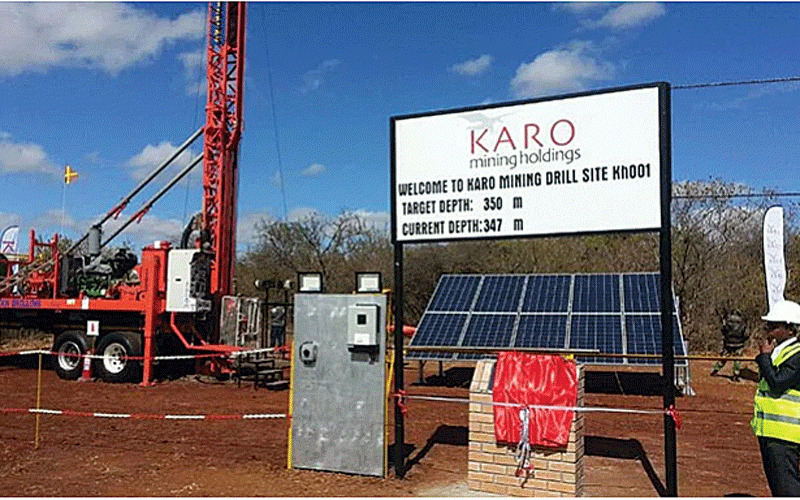
GOLD production in Zimbabwe increased by 25% to 2 375,3 kilogrammes in January this year with small-scale miners maintaining their dominance over large scale producers, official data show.
According to statistics obtained by Standardbusiness last week, small-scale miners produced 1 895,9 kg, up 32% compared to the same period last year.
Large-scale miners, on the other hand, produced 1 109 kg, up 19% in the prior period.
Zimbabwe Miners Federation acting chief executive officer Tafirenyika Chitsungo attributed gold increase to government efforts to boost production through gold mobilisation exercises, establishment of gold service centres, and responsible mining audit initiative.
Chitsungo also said the government’s efforts to curb leakages as well as availability of liquidity at Fidelity Gold Refinery to buy the gold contributed to the increase.
He, however, lamented softening gold prices, saying it will affect the mining sector.
“Yes, the industry will be affected. Zimbabwe is dependent on producing globally demanded commodities, for instance gold for economic sustenance,” Chitsungo said.
“The declining global commodity prices pose a significant concern for Zimbabwe’s ability to generate foreign exchange through exports.”
- Zimbabwe deals help China tighten African lithium grip
- Zimbabwe deals help China tighten African lithium grip
- Disgruntled chrome miners meet govt over poor prices
- Zimbabwe’s huge say in US$60m lithium market
Keep Reading
The mining sector grew at a slower 4,8% in 2023 compared to the 10,5% seen in the prior year.
Challenges in the sector included persistent power cuts, and an increase in operating costs on the back of elevated imported inflationary pressures.
Global oil prices lost 10% within the year whilst local diesel pump prices ended the year 3,7% higher relative to the same period last year factoring into the cost base.
Capacity utilization for the industry was however up three percentage points to 84% within the period.
Gold production fell 15% year-on-year in 2023 to 30,11 tonnes, underperforming initial estimates on account of lower production from artisanal miners, electricity deficits and currency volatility.
On a global level, despite the metals and minerals index retreating 8% year-on-year, gold prices remained resilient, yielding a 14% gain within the year and closing the year at US$2,062.
Gold exports are, however, expected to decrease 6,3% to US$1,82 billion.
Platinum group metals (PGMs) prices however saw a notable decline in 2023 with receipts expected to fall 37% to US$1,4 billion in 2023.
Lithium production in 2023 is estimated to have grown 761% to 881,709 tonnes with recorded export revenues of US$716 million.
Going into 2024, the industry is expected to grow 7,6% off improved power supply and ongoing investments in the sector aiding growth in production.
“However, the Chamber of Mines expects revenues in the industry to fall by circa 10% in 2024 with profitability coming under pressure as commodity prices soften,” Inter Horizon Securities said in its latest report.
“However gold prices are forecasted to hold ground in 2024 on account of the sustained uncertainty in economic conditions.
“Price outlook for key minerals lithium and PGM’s however looks bearish.”










